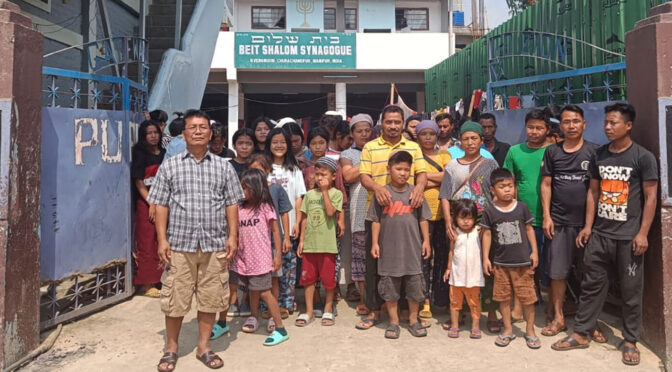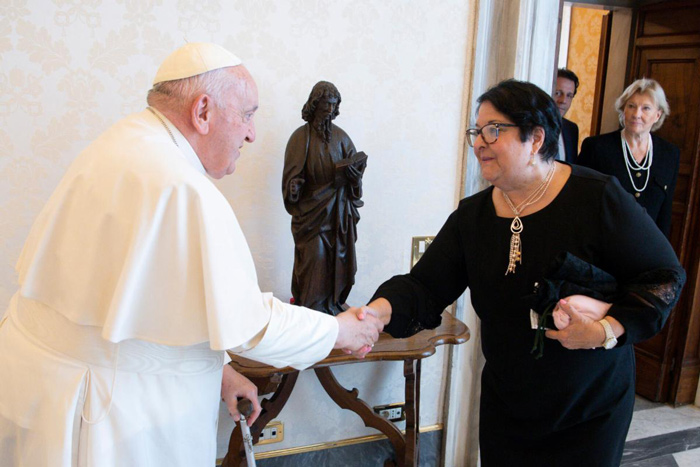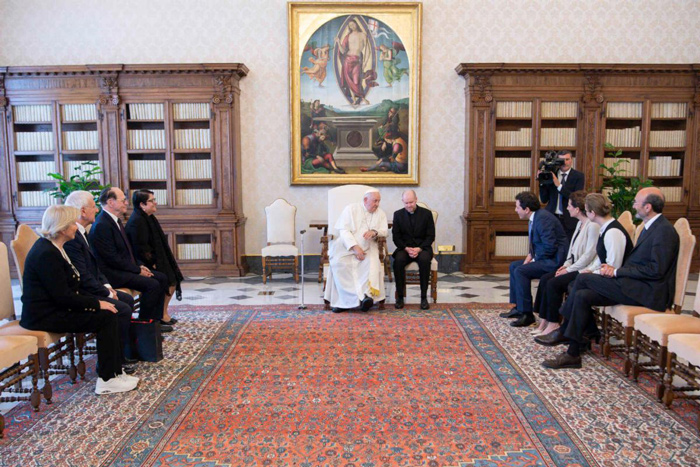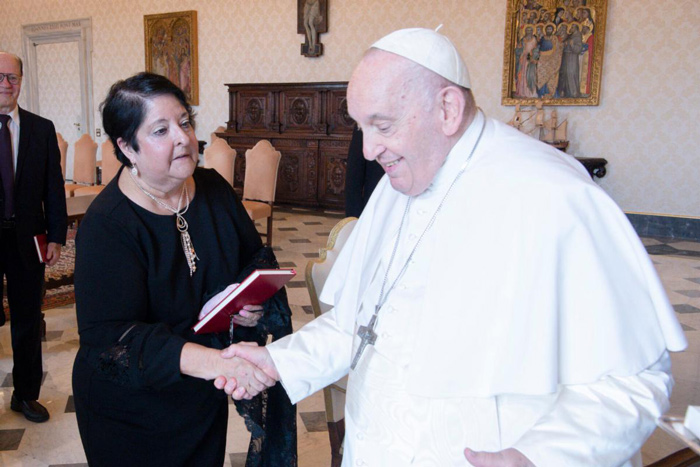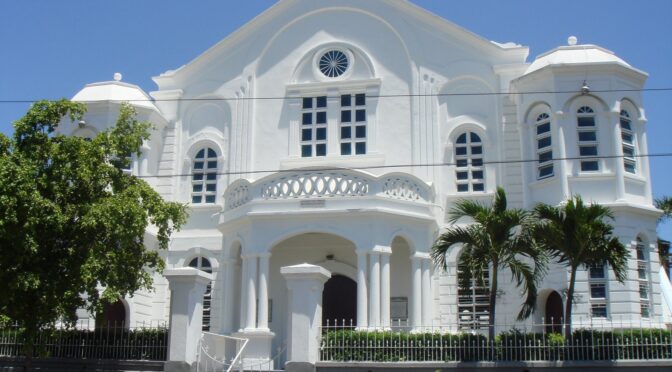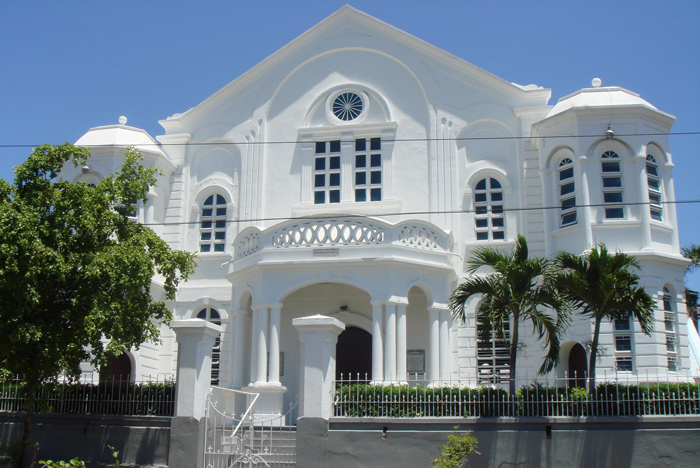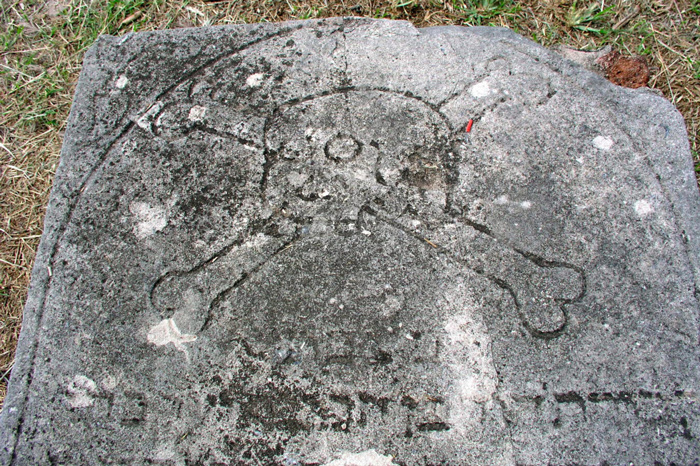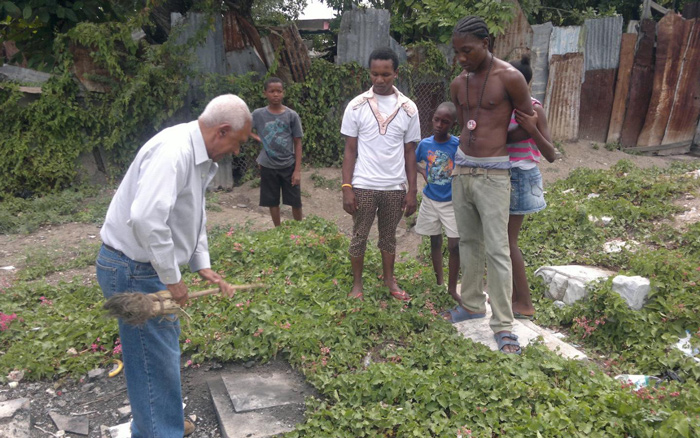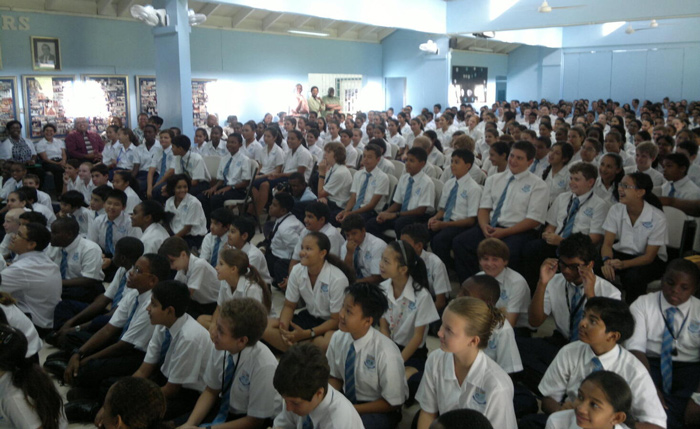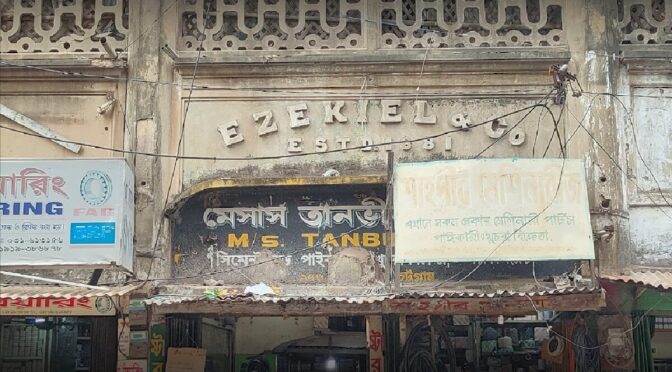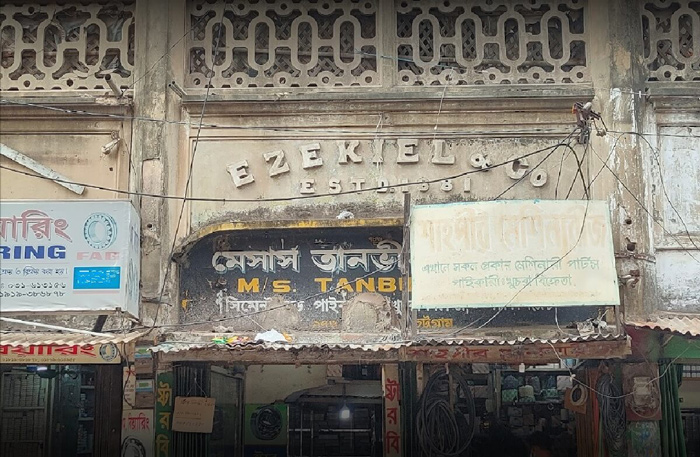BY JORDYN HAIME • JUNE 16, 2023

(JTA) — For the past several years, life was good for Lalam Hangshing as president of the Bnei Menashe Council, the governing body for Jewish communities in the Indian states of Manipur and Mizoram.
While living at his parents’ house, he and his wife enjoyed the clean air and beautiful scenery of Manipur, a state in northeast India home to close to 3 million people. Miles away, Hangshing rented out a newly-built four-story home to a film production company.
Everything changed on May 3, when rioting broke out between the ethnic majority Meiteis and the tribal minority Kukis, a violent conflagration that had been building up for years. Local groups say Meiteis began targeting Kuki institutions and razing homes to the ground, and Hangshing — also the general secretary of a Kuki-led political party — feared his house was next.
“When the problems started on the third of May, with military precision, the mobs went straight to [Kuki] houses,” Hangshing said. “They ransacked them and vandalized them and they burned each and every house in Imphal city within one and a half days.”
According to Shavei Israel, an NGO that helps “lost tribe” Jewish communities immigrate to Israel, over 1,000 members of the community, or 20% of their total, have been displaced. One community member was killed, and another was shot in the chest and is hospitalized. Two synagogues and mikvahs, or ritual baths, were burned down.
(Degel Menashe, an Israeli NGO that is dedicated to supporting the Bnei Menashe and has a longstanding feud with Shavei Israel, said one synagogue was burned.)
Hangshing is Kuki, as are the thousands of other Bnei Menashe Jews in Manipur. On May 4, Hangshing left his home and over a month later, has yet to return.
He spoke with the Jewish Telegraphic Agency from Delhi, more than 1,000 miles from his home. His four-story house has been completely destroyed, but his parents’ home is somehow still standing. He worries about family possessions, such as religious books belonging to his father — who had helped found Manipur’s Jewish community — and a favorite set of golf clubs left behind, all in danger of being looted or destroyed any day now.
Another estimated 292 Bnei Menashe families have fled to Kuki-majority hill areas within Manipur or to the nearby state of Mizoram, according to Shavei Israel.
In Mizoram, over 100 Jews initially took refuge in the Shalom Tzion synagogue in Aizawl, in the houses of other Jewish families or at hotels, but most have moved to a paramilitary camp nearby. Community leaders say the refugees are not facing any immediate danger and have enough food and supplies thanks to the tens of thousands of dollars in aid rolling in from Shavei Israel and Degel Menashe.
“They basically just fled with their documents, and they have prayer books, their tefillin and ritual items, and the clothes on their back,” said Asaf Renthlei, a Mizoram Jewish community member and Degel Menashe volunteer. At relief camps, he said, community members have observed Shabbat every week since they fled.
“This is one of the gravest crises the Bnei Menashe in India have ever experienced,” said Michael Freund, who has been chairman of Shavei Israel since he founded the organization in 2002.

“A state gone rogue”
Violence broke out in Manipur state in early May when tribal groups launched a protest against the Meitei’s demand for Scheduled Tribe status, which is traditionally reserved for minority tribes such as the Kukis and ensures certain rights to education, government jobs and other privileges. The Kukis (which make up about 16% of the population and are majority Christian) say that the Meiteis (who make up 53% and are majority Hindu) already have outsized privilege and political representation.
The May 3 protest was only the spark that has ignited a conflict based on long-standing grievances against the Kuki minority, said Sushant Singh, a senior research fellow at India’s Centre for Policy Research.
“At the core of it, it is about Meiteis claiming that they are the original inhabitants of the state, Kukis are illegal immigrants, and… [the Meiteis] have been forced to occupy only 10% of the land,” Singh said. “And because of the special privileges that tribes have in India, they cannot go and occupy the land occupied by Kukis.”
As the conflict enters its second month, over 100 deaths have been recorded and an estimated 40,000 people have been displaced; some entire villages are destroyed and over 200 churches have been burned, as well as the two synagogues in the Imphal area. A statewide internet blackout has been in place since the beginning of May.
While both Kukis and Meiteis have participated in the violence, Kukis have “suffered the most,” and state police and security forces have joined Meitei groups in targeting Kukis, Singh said. Human Rights Watch has called on India to investigate police violence in Manipur, which local groups have disputed.
“It has essentially been a state gone rogue acting against a minority community,” Singh said.
Though the government has called for a ceasefire and established a peace committee, those efforts to quell the violence have been unsuccessful. The military has implemented security measures and evacuated Kukis further into the hills and Meiteis into the plains, but Singh said this has only reinforced geographical divides, instead of facilitating a solution that could allow the two groups to live alongside one another in the future.
“The army has been called in but they are very ineffective because it’s a civil war. They can’t take sides. They just stand around and when the firing gets too heavy, they stand aside so it’s left to us to fend for ourselves,” Hangshing said.
Citing the government’s failure to protect them, Kukis have called for separation from the state of Manipur. As the conflict stretches into its second month, Indian Prime Minister Narendra Modi has yet to comment on the crisis in his country’s northeast.
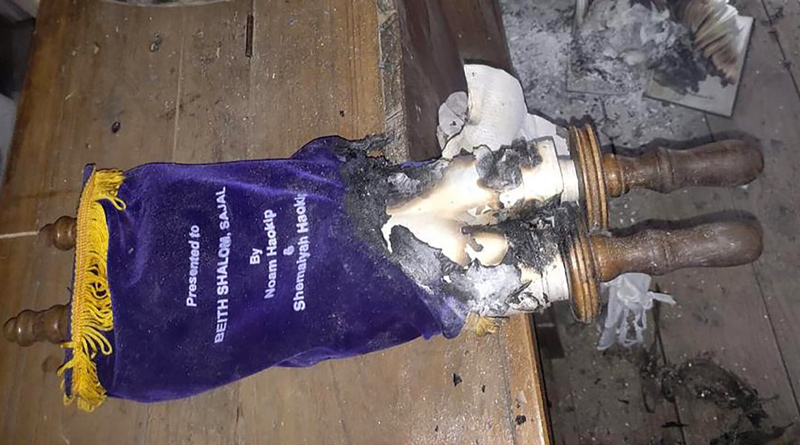
An appeal to Israel
The Bnei Menashe identify as descendants of a “lost tribe” group, tracing their origins to the Israelite tribe of Menasseh. In 2005, a chief rabbi of Israel affirmed their identity as a “lost tribe” group with historic Jewish ties, but researchers have not found sufficient evidence to back the claim. Bnei Menashe Jews began immigrating to Israel in the 1990s, and because of their “lost tribe” status, they all undergo formal Orthodox conversions upon arrival. Around 5,000 remain in the states of Manipur and Mizoram today, and about 5,000 have already immigrated to Israel.
Many have struggled to gain entry into Israel over the past two decades, and they are now asking the Jewish state to expedite the immigration process to help them escape the violence. But despite recent celebrations surrounding the opening of a new Indian-Jewish cultural center in central Israel, to which Netanyahu and President Isaac Herzog sent recorded blessings, Jerusalem has yet to publicly respond to the situation.
Israel’s foreign minister, Eli Cohen, visited India last month on a planned trip aimed at strengthening ties between the two countries. He did not comment on the matter, and his visit was cut short due to a military operation in Israel.
“I think under [Benjamin] Netanyahu, particularly in this stint as prime minister, there are very few expectations. He is very close to Mr. Modi’s government, so I don’t think anybody expects anything from Netanyahu,” Singh said.
The Bnei Menashe’s “grey zone” religious status, in the words of Renthlei, makes their immigration to Israel more complicated for them than most. Before the Bnei Menashe can even apply to immigrate, they must face a panel of rabbis — who usually come all the way to India — for interviews.
“It’s not like Ukraine. The Ukrainians are Jewish without any doubt. But the Bnei Menashe, we are in some gray zone of not exactly not Jews, but not exactly Jews also,” Renthlei said. “It’s unlikely that the Bnei Menashe would just be able to make aliyah, even in this situation, unlike the Ukrainians.” Thousands of Ukrainian Jews have immigrated to Israel since Russia’s invasion began in February 2022.
The Jewish Agency for Israel, which helps facilitate immigration, and the UJA-Federation of New York have provided funding to Shavei Israel to help displaced persons, representatives from Shavei said. The Jewish Agency, the Ministry of Aliyah and Integration, and the Israeli consulate in India did not respond to JTA’s requests for comment.
“We’re too small to matter, I suppose,” said Isaac Thangjom, director of Degel Menashe. Thangjom, who lives in Israel, has been in contact with officials in the Ministry of Aliyah and Integration.
“They are very concerned, but they haven’t given me any explicit answer despite my proddings,” he said. “Their responses have been very tepid.”
This article was originally published by the JTA. Click here to view it on their website.

